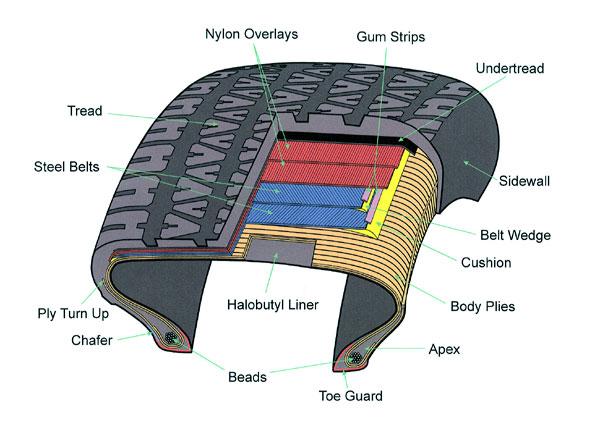Difference Between Radial and Non-Radial Tires
The first difference between radial and non radial tires is that their respective structures are different. The term ‘radial and non radial tires’ also applies to earth-moving tires.
The distinction is in the plan of the base tire body. Tires worked for a long time utilized a bias or crossed employ outline which was cheap and solid, and was extremely lenient of minor defects and varieties in the lay out or situating of the tire strengthening material (the Ply’s were not exactly so basic in the situating amid assembling ) however the inclination handle configuration additionally brought about the tread of the tire “crabbing” or “squirming” as the tire upheld the heaviness of the vehicle was disseminated over the tread as the tire turned.
Outspread tires, as the name suggests, use a symmetrical spiral example for the base tire ply’s, this outline requires a considerably more elevated amount of value control and plan figurings than the inclination handle does however at a huge change in both diminished moving resistance (read enhanced mileage ) and in decrease of the crabbing (tire wear) and this outcomes in enhanced control in cornering and better lessened footing (read Snow and Ice ) execution. This is the reason that all tires produced today are outspread sort tires.
Radial Tires
Michelin developed Radial tires in 1946. But gradually the need for a more flexible tire, that can absorb shock, became apparent. Their property is also stronger, which enables machine to operate at higher capacities.
In Radial tires, the steel cord piles are located on the heel, along with a belt around the carcase. The exact location of cord plies are against each other. This is the reason why the side walls are very flexible.
The steel cord plies are in the bottom layer. They are the tire’s most important properties.

Benefits of radial tires:
- Better steering and road contact
- Flexible side wall ensures improved driving experience
- Generates less heat at high speeds
- Tread-related damage resistant
Join our FREE CAR GIVEAWAY Campaign here
Disadvantages of radial tires:
- The harder tread generates more noise
- The side walls are susceptible to curbstones
- The steel belt is less effective in dealing with mild bumps
Diagonal Tires
The use of diagonal tires commenced in 1898. Before the introduction of Radial tires, they were the industry standard.
The carcase layers in diagonal tires are made of nylon cord. In the side walls and the tread, they are located diagonally. The exact angle is 55 degrees. Diagonal tires are a part and parcel of straddle carriers, which take part in port activities.
Benefits of diagonal tires:
- Enhances vehicle stability
- Self-cleaning feature on muddy surface
- Side wall damage resistant
Disadvantages of diagonal tires:
- Rolling resistance causes the tire to heat up very quickly; which ultimately deteriorates tire’s condition.
- Diagonal tires are rigid in nature. This decreases the overall level of comfort.
- These are some of the major differences between radial and non radial tires. Share your opinion on the comment section.














